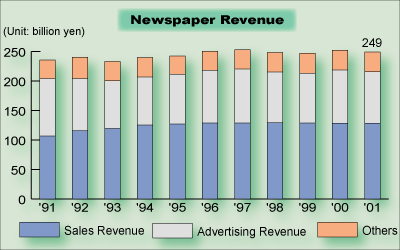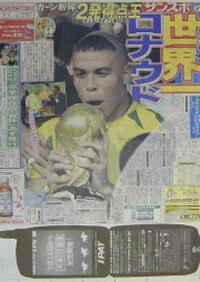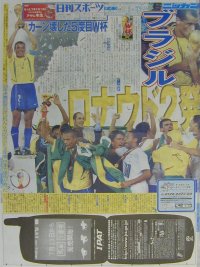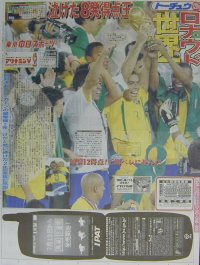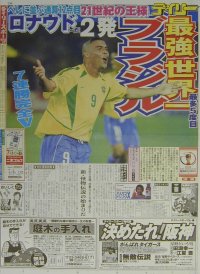|
The registration form
NSK News Bulletin Online NSK has announced that the overall earnings of Japanese newspaper companies in 2001 totaled 2.490 trillion yen. That figure represents sales estimates received from 98 NSK-member publishers of daily newspapers, including sports dailies. The total estimate is down 1.3 percent year-on-year in what would be the first decrease in two years. With circulation revenues marginally up, advertising revenues fell hard enough to drag down the entire sector. NSK°«s annual survey is based on the earnings estimates of each member company, derived from company financial statements. For companies that did not make their financial reports available, earnings projections were extrapolated from other companies of similar size and scale. Gross earnings figures comprise circulation revenues, advertising sales, non-operating income, special profits and all other income, including operating income from activities such as publishing, printing on assignment and special projects. Gross earnings are generally equivalent to total income for each newspaper company. By revenue source, circulation revenues increased 0.1 percent year-on-year in 2001 to 1.284.7 trillion yen, in the first rise in three years. But advertising revenues plunged 3.2 percent in the same period to 872.5 billion yen in the first year-on-year drop in two years. The °»other income°… component also fell, declining 1.4 percent to 332.8 billion yen, in its first decline in six years. As a result, the proportion of gross earnings originating from circulation grew 0.7 percentage points to 51.6 percent, while advertising feel by 0.7 percentage points to 35.0 percent.
Sixty NSK newspaper companies and news agencies met in Tokyo on June 14 to create the Japan Newspaper Copyright Council, a body to administer the copyrights on newspapers. The founding members met at the Nippon Press Center Building to set the terms and operating rules for the new organization and to appoint its first directors. They elected the Mainichi Shimbun Senior Executive Director Katsumi Ishiguro as the council°«s first president. The member companies empowered the copyright council to handle all requests for reproductions of up to 20 copies of any newspaper page. That copy limit has existed for some time at the Japan Reprographic Rights Center, or JRRC, a broader organization established in September 1991 to protect the rights to reproduction of any materials published by its member companies. The newly formed Japan Newspaper Copyright Council is to protect copyrights by managing and controlling rights related to the reproduction of newspaper contents. It is also to coordinate its activities with the JRRC. The council will simultaneously work to raise awareness and understanding of the concept of copyright protection. Among its more routine jobs, the council will handle the re-entrusting to the JRRC of rights to reproduction belonging to member companies, as well as the distribution of fees collected by the JRRC to member newspaper companies and news agencies. Each member company is to receive fees that the JRRC collects from registered users. The copyright council°«s board of directors is to propose rules for distributing the fees that must be approved at a general meeting by March in 2004, when the first revenues from reproduction permissions are due to start coming in. The council will also collect fees from its own member companies whenever they wish to copy newspaper pages or magazines issued by other members. Such fees are to be transferred to the JRRC in a lump-sum payment. A sum not exceeding 30 percent of the total reproduction-permission fees that the council gets from the JRRC is to be used to cover the administrative and operating costs of the council. There is no membership fee. For the time being, the secretariat of the council is to be located at the Tokyo head office of the Mainichi Shimbun. Some major newspaper companies, including the Nihon Keizai Shimbun and the Hokkaido Shimbun have not joined the newspaper copyright council. The Nihon Keizai has been promoting its own copyright-management scheme. The Japan Reprographic Rights Center was established to act on behalf of the holders of copyrights and to collect fees from corporate users seeking low-volume reproductions of copies of copyrighted publications. The Education Ministry officially recognized the JRRC as a corporate judicial entity in 1998. The JRRC membership includes the Federation of Copyright Holders°« Associations, the Academic Copyright Council and the Publishing Copyright Council. The Japan Newspaper Copyright Council will now become the fourth official member. The JRRC serves an estimated 3,300 corporate clients.
|
||||||||||||||||||||||||||||||||||||||||||
